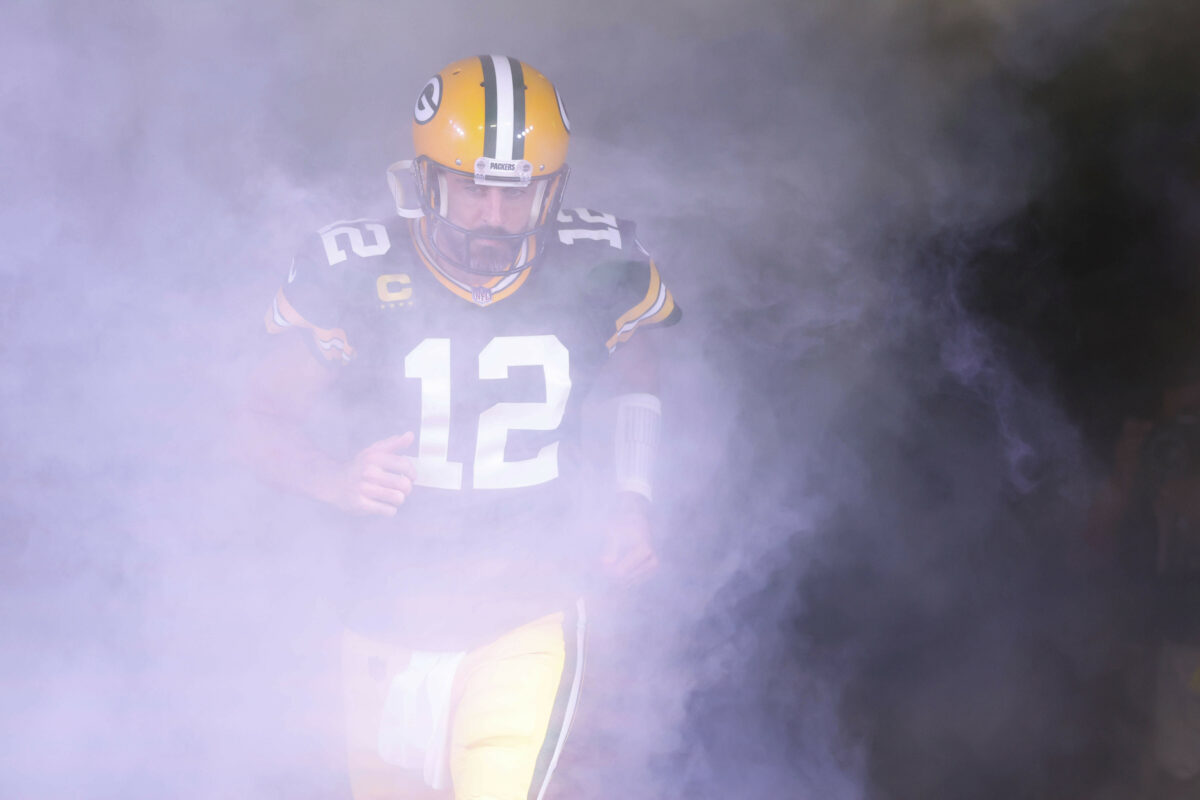After appearing on “The Pat McAfee Show” on Wednesday, Aaron Rodgers confirmed what we all suspected, which is that he wants to play football in 2023, and he wants to play for the New York Jets.
However, the timeline for when this deal will be finalized is still unknown. The general thought was that a trade would be made by Wednesday, when the new league year begins, with both Green Bay and New York presumably wanting to know what their specific salary cap situations are going to be like. But now, it would appear that negotiations will go beyond that date with no end in sight.
Rodgers also added that it isn’t him who is holding things up. Rather a deal between the Packers and Jets hasn’t yet been made, and that Green Bay is “digging in their heels,” when it comes to trade compensation.
To add more context, Adam Schefter would say that there are “layers” to this entire situation.
“It’s not a simple decision of Aaron Rodgers just saying, ‘okay, I want to play for the Jets,’ and snap your fingers,” said Schefter on ESPN’s Get Up. “It’s more complicated than that.”
“The Jets have to figure out a restructured contract with him, and they have not done that to knowledge just yet. More complicated is the fact that the Jets and the Green Bay Packers have to figure out compensation on what it would take to acquire Aaron Rodgers.”
Deciphering what a potential trade package could look like has not been easy. One week we hear from multiple reporters that Green Bay would be lucky to get a first-round pick in return. Schefter then reporters that the Packers want two first-round picks, only to then have Tom Pelissero later that same day say that isn’t the case.
In regards to these reports, Tom Silverstein would provide some perspective, mentioning that these leaks are likely from either the Packers or Jets, trying to get an upper hand in negotiations.
If you’re the Jets, yes, you’re acquiring Rodgers, but to do so, you’re likely being asked to part with premium draft capital. On top of that, while also having to pay Rodgers the nearly $60 million that he is guaranteed for the 2023 season, New York might only be getting one season out of him. If Rodgers returns in 2024 at 40 years old, there is a massive cap hit that then comes with him doing so — hence why New York is trying to rework Rodgers’ deal, as Schefter reported.
It’s also worth mentioning that Rodgers played closer to below average than elite during the 2022 season — it’s not as if he is coming off one of those MVP performances.
The Packers, meanwhile, are trading away a future Hall of Famer and four-time MVP, who won two of those awards recently. Green Bay also has limited cap space, and I’m going to guess that they are unwilling to take on any of Rodgers’ $59.5 million guaranteed salary, which would further swell the already $40.3 million dead cap hit he will leave behind.
Further complicating this could be if any other players are included in the trade package, adding more contracts and potential cap restraints to the mix, whether they’re going from New York to Green Bay, or vice versa.
So who has the leverage? The Jets have no Plan B at the quarterback position, and the Packers have made it clear they are more than ready to move on from Rodgers.
Following Rodgers’ interview with Pat McAfee, where he said that there was no path for him back to Green Bay at this point, Andrew Brandt, former Packers Vice President of Player Finance and General Counsel, would say that the leverage now lies with Green Bay. There is no timetable for them or no real need to hurry this process along, and they can wait for the Jets to cave.
The Packers know who their quarterback will be, and Rodgers is already on the books in 2023 for about $31 million in cap space. If he’s traded, his dead cap hit jumps to roughly $40 million. And if a trade doesn’t take place — which I’m not saying is going to happen — the Packers can place him on the retired list, actually freeing up almost $16 million in cap space this season.
In other words, for the Jets, it’s Aaron Rodgers or bust with a roster that they feel can be a Super Bowl contender. For Green Bay, they’ll go about business as usual, operating with either $24 million in available cap space or about $15 million. Either way, they have a plan in place for each scenario — neither of which will involve a splash free agent addition.
Everyone wants a resolution as soon as possible, and with Rodgers acknowledging he wants to be a Jet, progress was made. As we recalibrate our expectations, the true deadline might be the first night of the NFL draft, although I doubt it gets to that point. But with that said, it still might be a bit before we have a final answer.
[lawrence-related id=91224,91216,91215,91207,91190]
[mm-video type=playlist id=01eqbxb1xg7g19wqdc player_id=01eqbvhghtkmz2182d image=]
